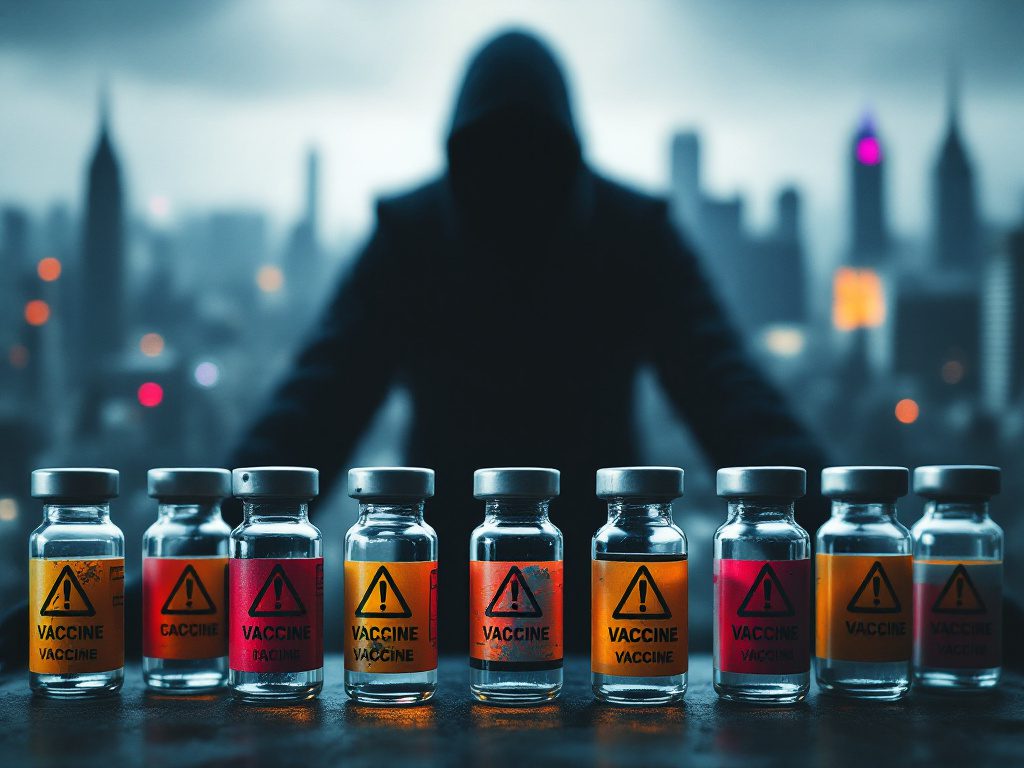Fact or Fiction: Peering Into the Vaccine Debate
For millions of American families, the single most consequential medical decision they face for their children is whether to vaccinate. So when a prominent political figure, now holding one of the nation’s highest public health posts, repeats a claim as incendiary as ‘aborted fetus debris’ in the MMR vaccine, the impact radiates far beyond a single town hall in Texas. Robert F. Kennedy Jr., at a NewsNation event alongside Donald Trump, revived a decades-old anti-vaccine trope: that the critical measles, mumps, and rubella vaccine contains human fetal tissue, and that this—he asserted—fueled religious resistance, particularly within the Mennonite community recently rocked by a deadly measles outbreak.
The science, as leading virologists and public health officials repeatedly stress, tells a different story. Yes, the origins of the technology involve cell lines derived from two legal abortions in the 1960s. But when you break down the facts, there are no fetal cells or tissue in the final product. The CDC maintains these cell lines have been purified over generations for safe, effective vaccine production. But political theater doesn’t thrive in the realm of quiet, consensual scientific truth.
The Anatomy of a Falsehood: How Dangerous Narratives Gain Traction
What motivates a newly-minted Health and Human Services Secretary to lean into such controversial territory? Kennedy’s recent rhetoric, inextricably tied to vaccine conspiracy culture, has incited both outrage among medical professionals and renewed anxiety in religious communities. His assertion echoes motifs long debunked by infectious disease experts—a group that now includes critics like Columbia University’s Dr. Irwin Redlener, who warned, “Kennedy’s aggressive ignorance will be responsible for countless deaths here and globally.”
Real-world consequences followed fast: In Texas, where the Mennonite community experienced its worst measles outbreak in years, the public health response was already hindered by vaccine mistrust. Kennedy’s explanation that religious groups object because of ‘aborted fetus debris’ oversimplifies and misinforms. A closer look reveals a deeper interplay of factors—limited access, poverty, and cultural marginalization often weigh far heavier than doctrinal qualms about vaccine ingredients.
At the center of Kennedy’s narrative is a tactic familiar to observers of anti-vaccine movements: shift attention from what vaccines prevent to exaggerated claims about their risks. Speaking at the town hall, Kennedy suggested measles deaths are so rare they barely merit mention, while autism and diabetes rates—issues with little credible link to vaccination, according to the National Academies of Science—deserve the spotlight. Framing the debate this way, Kennedy invokes the specter of a public health crisis while painting life-saving medicine as sinister.
“Kennedy’s aggressive ignorance will be responsible for countless deaths here and globally.”
Repeating falsehoods doesn’t make them true—but it does erode trust. Pew Research Center found in a 2022 survey that vaccine confidence among Americans, especially among younger adults and conservatives, has dropped sharply since the onset of the COVID-19 pandemic. False narratives, elevated from fringe webpages to town hall stages, feed doubt and diminish community immunity.
When Science Meets Faith: Ethics, Pragmatism, and the Human Toll
Kennedy’s invocation of religious liberty resonates in a country where faith is often tightly braided into public health decisions. Yet the Vatican’s 2005 directive—acknowledging vaccine production via distant cell lines—declared it ethically permissible, even imperative, to protect the vulnerable if no alternative is available. This is a crucial nuance: the theoretical origins of a vaccine aren’t equivalent to its ethical standing today. When children’s lives are at risk from preventable disease, even those with religious reservations are told not to abstain.
Why does this matter now? Because measles, once eradicated in the U.S. thanks to a robust vaccine program, is staging a comeback. Since January, the CDC has documented more than 800 cases across 25 states, with outbreaks consistently hitting communities like the Mennonites hardest—not just due to ideology, but due to gaps in healthcare access, socioeconomic stress, and, yes, the insidious spread of misinformation.
The numbers don’t lie: a single dose of the MMR vaccine is 93% effective against measles, 97% for rubella; a second dose raises the measles protection nearly to 97%. None of these statistics support Kennedy’s claim. Harvard epidemiologist Dr. Michelle Williams contends that “demonizing vaccines puts everyone’s children at risk, not just your own.” The consensus, spanning the World Health Organization to the American Academy of Pediatrics, is united: vaccines remain one of the safest and most essential tools in medicine’s arsenal.
Beyond that, when politicians amplify disinformation, they siphon attention and funding from the real work public health requires: patient outreach, culturally competent education, improving healthcare infrastructure, and combating poverty-driven disparities. The result isn’t just a philosophical debate—it’s a measurable uptick in preventable illnesses, hospitalizations, and, tragically, childhood deaths.
Looking Forward: Clarity and Courage in the Face of Uncertainty
The root challenge is not simply sorting fact from fiction. It’s building enough trust so that science can thrive in communities skeptical of government, outsiders, or even modernity itself. That challenge takes leaders with moral clarity and intellectual humility—qualities sorely lacking when politics rewards viral soundbites over careful, evidence-based persuasion.
History offers cautionary tales. One need only recall the polio vaccine push of the 1950s, when misinformation nearly derailed campaigns that went on to save untold millions of lives. Or more recently, the spiraling resurgence of measles when routine childhood vaccinations fall below critical thresholds. Each chapter is a stark reminder: when we lose our collective grip on scientific literacy, it’s always the most vulnerable who pay highest.
Taming this pandemic of misinformation demands more than fact sheets and press releases. It asks us—parents, health workers, journalists, citizens—to challenge falsehoods, to insist on transparent science, and to champion social solidarity over fear. Can our democracy withstand the corrosive effects of leaders who trade in misleading claims? History suggests we have no choice but to try—and to demand better from those entrusted with the nation’s health.

